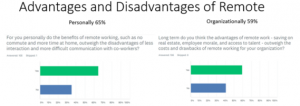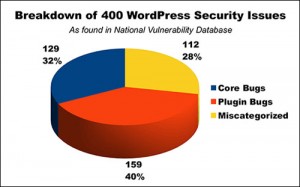Columnist Chad White says marketers need to be bolder and more innovative to win (and even just to survive) at email marketing.

When Malcolm Gladwell’s Outliers came out in 2008, everyone was really taken by the “10,000 Hour Rule,” which said that it took roughly 10,000 hours to become an expert at something.
At the time, I worked at the email marketing agency Smith-Harmon, and we liked the concept so much that we created our own corollary: the “10,000 Email Rule.” That’s where you are considered an email expert once you’d created, analyzed or reviewed 10,000 emails. Needless to say, that can take a lot less than 10,000 hours.
I remember the agency’s co-founder, Lisa Harmon, telling the team that email marketing was a relatively quick medium to master because:
- it’s high-volume;
- it’s highly measurable;
- it’s quickly measurable;
- it has high returns;
- it’s easily A/B tested; and
- mistakes aren’t seen by all your subscribers and only haunt you until your next send, which… oh my god… you have to get ready for!
Essentially, email marketing is the epitome of a “fail-fast” medium, because you can quickly and relatively painlessly experiment and learn from your tests and mistakes to achieve greater success. Or at least it should be.
Maturity needn’t mean getting stuck in a rut
However, based on our experiences at recent conferences, it appears that as email marketing continues to mature, we may be losing our tolerance for experimentation.
One of my teammates, Bettina Specht, was speaking at EMDay in Strasbourg, France, and shared the story of how our award-winning live Twitter feed email broke when we first sent it out. After her presentation, two different people asked Specht if the person responsible for sending the broken email was fired. (The person wasn’t fired. In fact, she’s since been promoted.)
At the Email Innovations Summit in Las Vegas, Rebelmail’s Mark Robbins shared some cutting-edge interactive email techniques. The very first question — statement, really — from the audience at the end of his presentation was from a guy who said Robbins hadn’t explained how creating engaging interactive email experiences would “make me money.”
And at the Digital Summit in Atlanta, our VP of marketing, Justine Jordan, mentioned that we’d created a poor mobile experience with another one of our emails by using a landing page that downloaded a ZIP file. Afterward, she was asked if she was going to “get into trouble” with Litmus for saying that onstage.
All of this is troubling because email marketing is set to experience many more disruptive evolutions in the coming years. To succeed amid the coming changes, email marketers will need to become much more flexible and less fearful.
4 fears we need to conquer
Here are the fears that we need to overcome to be successful in the coming years:
1. Fear of mistakes
Send enough emails, and you’re bound to make a mistake eventually. Even if you have the right tools and a solid checklist in place, email marketing has too many moving parts, and brands send too many emails, to have a zero error rate.
As we explain in our company’s report “How to Recover from Email Marketing Mistakes” (email registration required), the best you can hope for is to keep mistakes infrequent and small, and then to manage them quickly and recover with a degree of grace when they do happen.
But there’s also little doubt that the chance of mistakes increases when you vary your emails, and especially when you try new things. Whether it’s true or not, if email marketers think they’ll be fired if they make a mistake, they’ll stay as far away from innovation as they can in the hopes of self-preservation. That’s certainly not good for any brand.
2. Fear of being “first”
Too often, brands want to see multiple case studies before they’ll go ahead with a new project, triggered email, or whatever — even when the cost and risks are low. By waiting for that kind of information, all they’ve done is confirm that they’re 12 to 18 months behind others, who may not even be the leaders.
3. Fear of not generating returns
Most brands’ email marketing programs generate high returns. Indeed, even some very mediocre email programs produce healthy returns. Given the cost structure of email marketing, brands should be much more willing to experiment with new tools, tactics and strategies. Unfortunately, most brands are very risk-averse, even when it comes to low-budget endeavors.
For instance, a few years ago, a jewelry brand’s email marketing team had to lobby its executives hard and long to get support to create a triggered wedding anniversary email. Once launched, that email paid for the startup costs in just one month.
Minimize risks by starting with a minimally viable email or implementation. Once that’s live, if it performs decently, additional resources can be dedicated toward making that implementation more sophisticated.
4. Fear of A/B testing
The fear of experimentation seems to bleed over into even simple A/B testing, which is greatly under-supported. Only 63 percent of marketers test email subject lines, which are easy to test and show some of the best results, according to a Litmus poll of more than 800 marketers that will be released next month. And testing of other email elements falls off steeply after subject lines.
Not only is A/B testing a key optimization tool, it’s a vital part of “listening” to subscribers and one of the keys to turning email marketing into a conversation instead of a one-sided conversation.
More executive buy-in is needed
CMOs and other executives can better support and future-proof their email programs by:
- Destigmatizing mistakes and focusing adequate resources on prevention and recovery planning
- Allocating budget explicitly for experimentation
- Emphasizing risk-reward analysis when prioritizing email marketing projects and starting with implementations of minimally viable emails
- Mandating an A/B testing schedule, where every email gets at least a subject line test
If your executive team isn’t doing this, consider sharing this list with them. Because looking ahead to the changes that are coming our way — whether it’s interactive emails, hyper-personalization and -automation, wearables or machine-to-machine messaging — if you’re too afraid of failure, then you’ve just guaranteed that you’ll fail.
Some opinions expressed in this article may be those of a guest author and not necessarily Marketing Land. Staff authors are listed here.
Marketing Land – Internet Marketing News, Strategies & Tips
(28)
Report Post






